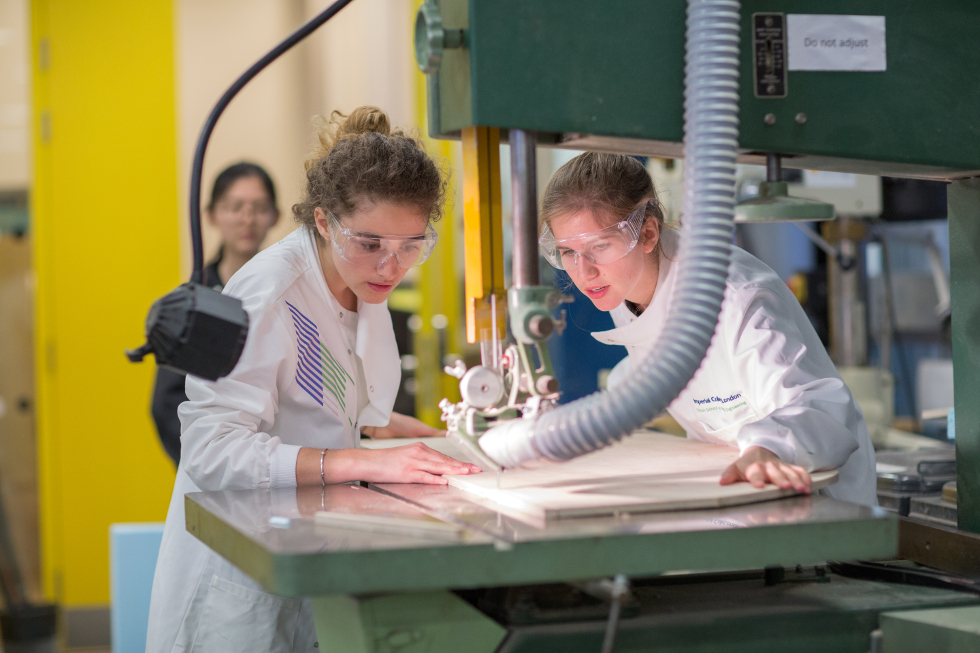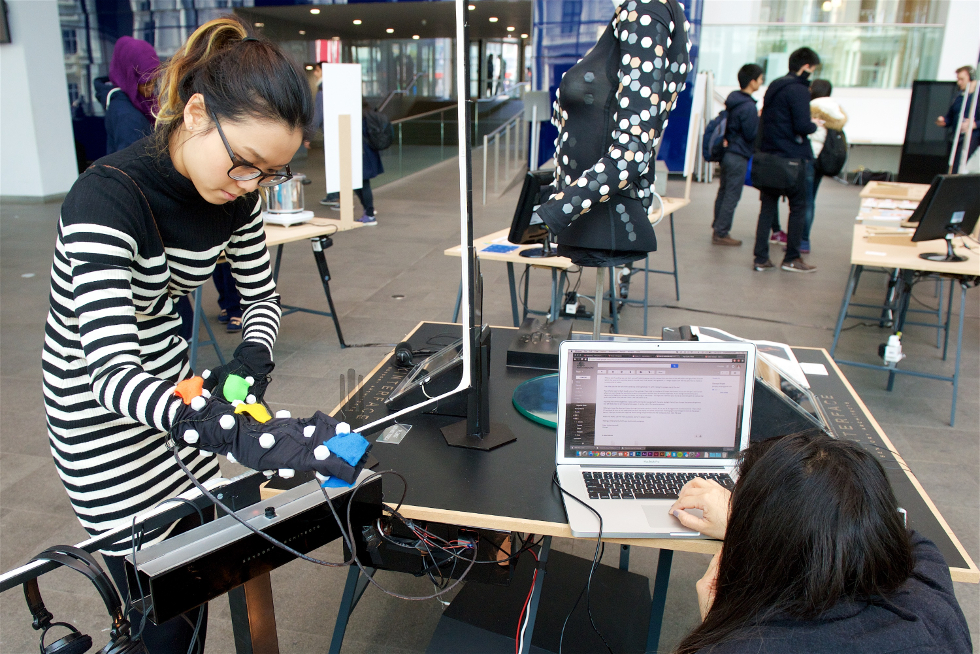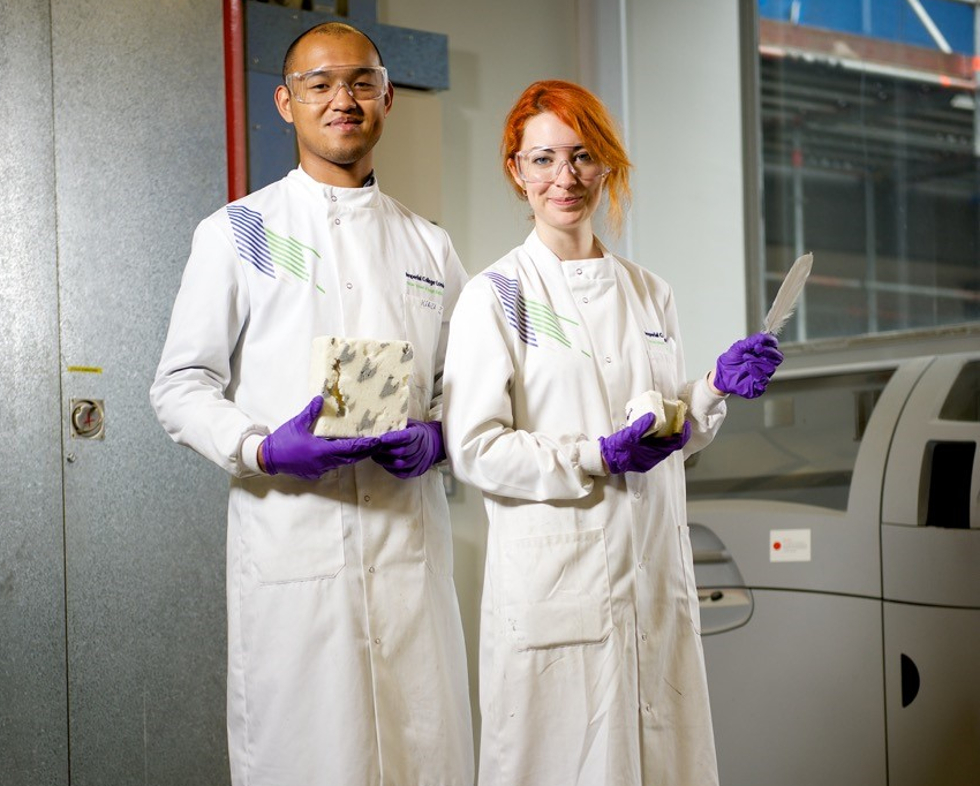When I started my undergraduate degree in 2003 I was one of only seven women in a class of 50. It’s an experience many will recognise, and even today many engineering courses have a stark gender imbalance.
Yet this autumn when our new undergraduate students turn up for The Dyson School of Design Engineering’s 2017 MEng Design Engineering course there will, if all goes according to plan, be more women than men. In fact, more than 52% of the projected intake will be female.
So why is this course different? Could design engineering be a new device in our toolkit to encourage more women into engineering?
With the UK having the lowest percentage of female engineering professionals in Europe at less than ten per cent, I think it is important to briefly explore some of the elements that I think is making design engineering attractive to a new generation of women.

The Dyson School of Design Engineering
The School was created to establish an undergraduate MEng in Design Engineering, and provide a home for our two postgraduate programmes: Global Innovation Design and Innovation Design Engineering (IDE). The IDE course has been running in partnership with the nearby Royal College of Art for over 35 years. It is fair to say that course has helped to shape the landscape of design engineering in the UK.
In 2015, the very first cohort of undergraduate Design Engineers arrived, and amongst them were 19 females and 21 males. The opening of the new school had received a lot of publicity, and we had inadvertently attracted an almost completely equal gender balance, which was a very happy surprise.
The following year, however, the school was established and the more traditional routes of engineering recruitment were used. Although we had an equal number of female applicants, the number of male applicants rose significantly resulting in our 2016 intake containing only 13 female undergraduates compared to 42 males.
We knew we were still learning about the difficult balance of recruitment, and we had to go back to the drawing board to attract more female applicants in 2017.
The key ingredient in our revised approach to recruitment is being far more proactive in outreach activities. We have also improved how we’ve targeted and pitched the degree, to emphasise the variety of real world design engineering projects in the curriculum.
Together, these approaches helped to advertise design engineering and establish the undergraduate programme’s reputation as a distinct type of course that is unlike any other.
The result is that we are looking forward to welcoming 33 new female students and 30 new male students. A marked increase and an exciting trend as the programme continues to grow.

Innovative role models
Perhaps the single most important factor that helps us to promote this course to aspiring applicants are the success stories that come out of the postgraduate programmes.
One great example is Elena Dieckmann, who has established Aeropowder, a company using feathers collected from poultry farms normally considered waste, and turning them into useful and sustainable materials.
One of our students graduating this summer, Theresa Ohm, is commercialising her idea of bringing flavour into the digital world, which may be adopted by the gaming world to make virtual reality more lifelike.
These inspiring women – and many others like them that have graduated from our programmes – are our best adverts and our best assets. They are pioneers, shaping the face of the industries they work in, and providing inspiration to the next generation coming through.
The ethos
As we shape our new undergraduate programme, we are aware that we’re training our students to do jobs that don’t exist yet and to be the creators of their own jobs.
To equip them to be future leaders, we spent a lot of time developing the School’s ethos and what it means to be a design engineer in the 21st Century.
Our definition is that Design Engineering is the fusion of both design thinking and engineering knowledge and practice within a culture of innovation and enterprise.
This ethos has helped to shape our curriculum to be broad, applied and future focussed. In my opinion, these are three key ingredients in training the design engineers of the future.
The breadth comes from the mix of skills and subjects our students are exposed to, ranging from fundamental science through to robotics and aesthetics.
The application comes through an emphasis on assessment through project work as opposed to exams.
They also have the opportunity to work on with industry on briefs with real applications.
The future focus is via the cutting-edge research happening at Imperial such as 3D printing and machine learning.
Students learn to embrace diversity, work closely with others, and draw on the broad expertise of their peers to realise their ideas.
All these factors chime well with our female students.

Room to improve
We’ve made great strides in the balance and promotion of young women at the school, but there is room for improvement. For example, we cannot yet boast an even split in our teaching staff, where women are less than a quarter of academics at present.
This highlights the importance of not only working on our student intakes but on shoring up the pipeline of women entering the workforce in design engineering.
Time to reflect
International Women in Engineering Day gives us a time to reflect on the achievements of female engineers.
We’ve got a long way to go, but it feels like places like the Dyson School is beginning to make inroads into redressing the gender imbalance in engineering education.
Dr Sheldrick is a lecturer at the Dyson School of Design Engineering. She has industrial experience in various product development roles on Triumph Motorcycles, LED luminaires and ambulances.











Water Sector Talent Exodus Could Cripple The Sector
Maybe if things are essential for the running of a country and we want to pay a fair price we should be running these utilities on a not for profit...